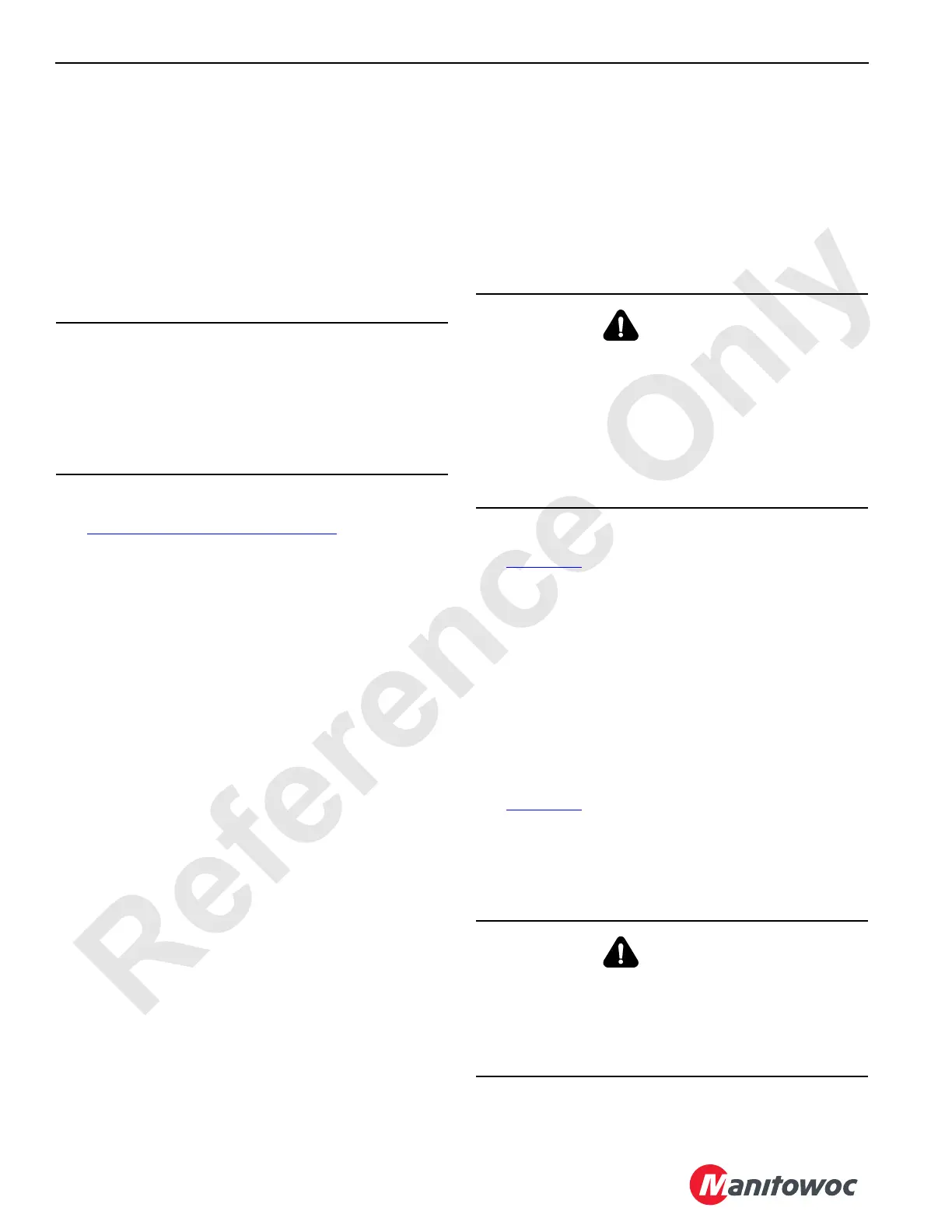SETUP AND INSTALLATION 2250 OPERATOR MANUAL
4-122
Published 06-24-16, Control # 241-01
LOAD LINE REEVING
Wire Rope Specifications
See Wire Rope Specifications Chart in the Capacity Chart
Manual for the following information:
• Parts of the line required for various loads
• Wire rope lengths and notes about the hoisting distance
for various parts of the line
• Maximum spooling capacity of the load drums
Wire Rope Installation
See Wire Rope Installation on page 4-116 for the following
instructions:
• Anchoring wire rope to the drums
• Installing wire rope on the drums
• Anchoring wire rope to the wedge sockets
Load Block
The following load blocks are available from Manitowoc
Cranes:
• 454 t (500 USt)—7 484 kg (16,500 lb)
• 272 t (300 USt) with weight plates—7 484 kg (15,400 lb)
• 91 t (100 USt) with weight plates—6 985kg (9,800 lb)
• 55 t (60 USt) with weight plates—2 007kg (4,425 lb)
• 27 t (30 USt) with weight plates—1 587 kg (3,500 lb)
• 14 t (15 USt) swivel hook with weight plates—861 kg
(1,900 lb)
NOTE: Manitowoc Cranes recommends laced reeving.
Using this type of reeving will result in the least
amount of block spin and load rotation. It is normal
with this type of reeving for the block to tip slightly
when it is raised and lowered empty.
When reeving rotation-resistant wire rope with odd
parts of line, dead end the wire rope as close to the
center of the block as possible to avoid rope
damage.
Universal Anchor Joint
See Figure 4-72 for the following procedure.
The universal anchor joint on the #132 jib point provides an
alternate dead-end location for 2-part reeving. The anchor
joint swivels in both directions to prevent bending loads. Its
location in the jib point minimizes twisting of the load line.
The universal anchor joint must be removed from the jib
point when a 2- or 4-part line is dead ended at the upper
dead-end lug and when a 3-part line is used. If the universal
anchor joint is not removed, the load line will rub against the
anchor joint support when operating at high boom angles.
Duplex Hook
See Figure 4-68 for the following procedure.
The duplex hook capacities are based on the lifting sling
angles. Attach the load so it is balanced equally on each ear
of the hook. The duplex hook has a hole to which a shackle
can be attached.
CAUTION
Wire Rope Damage!
Avoid wire rope damage from an improper fleet angle or
contact with adjacent parts. Do not hoist the load block or
hook-and-weight ball any closer to the boom or jib points
than specified on the Range Diagram in the Capacity
Chart Manual.
WARNING
Falling Load Hazard!
Avoid death or serious injury. The load block can fail if
overloaded, allowing the load to fall. Use only a load block
with a capacity equal to or greater than the load to be
handled.
Avoid overloading the bearings of the load block sheaves.
Attach the load to a duplex hook so the load hangs
straight.
WARNING
Falling Load Hazard!
Avoid death or serious injury. The load block or shackle
can fail if overloaded, allowing the load to fall. Limit the
load to be handled with the shackle to the capacity of the
load block or shackle, whichever is less.

